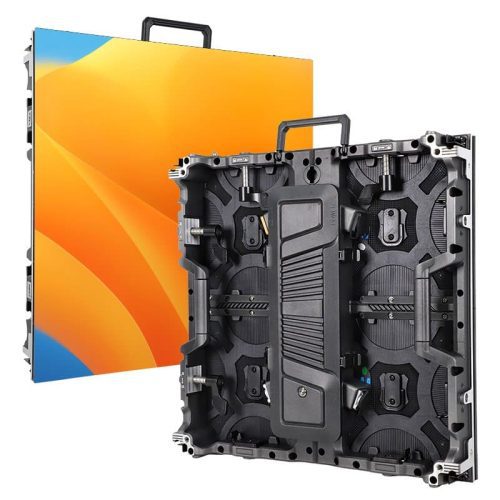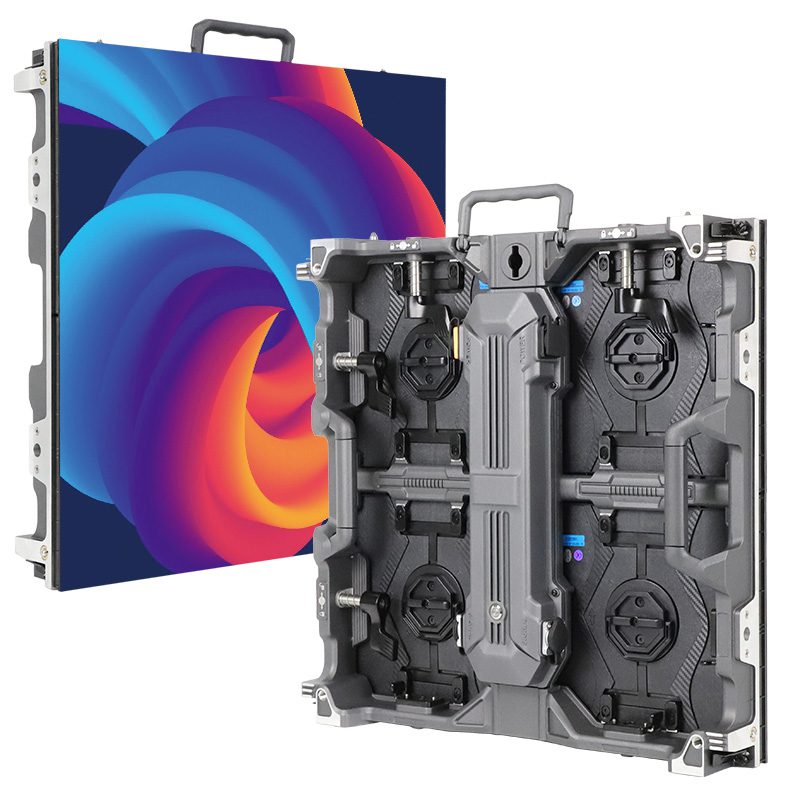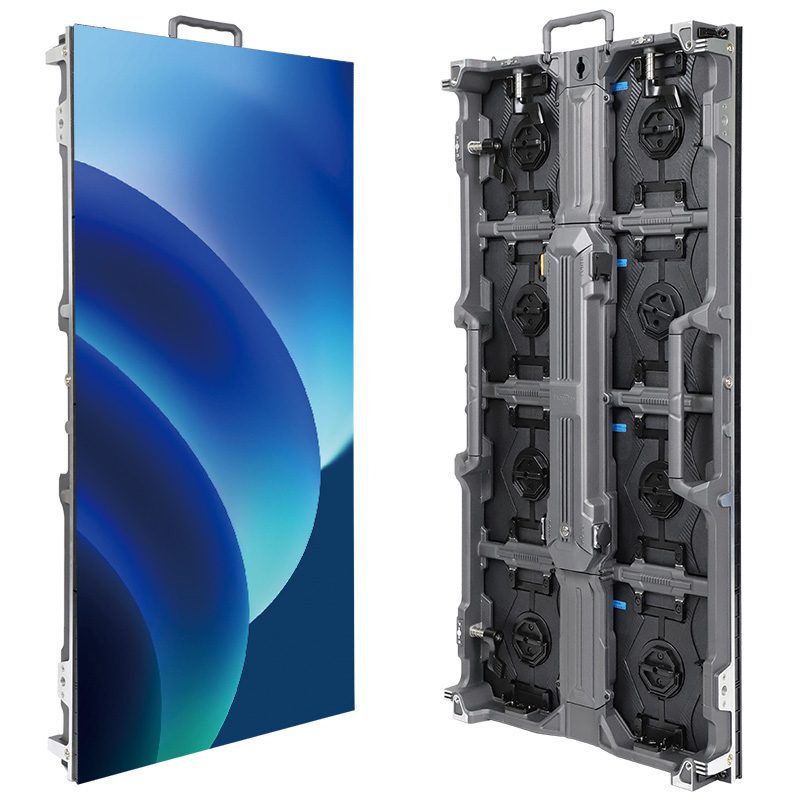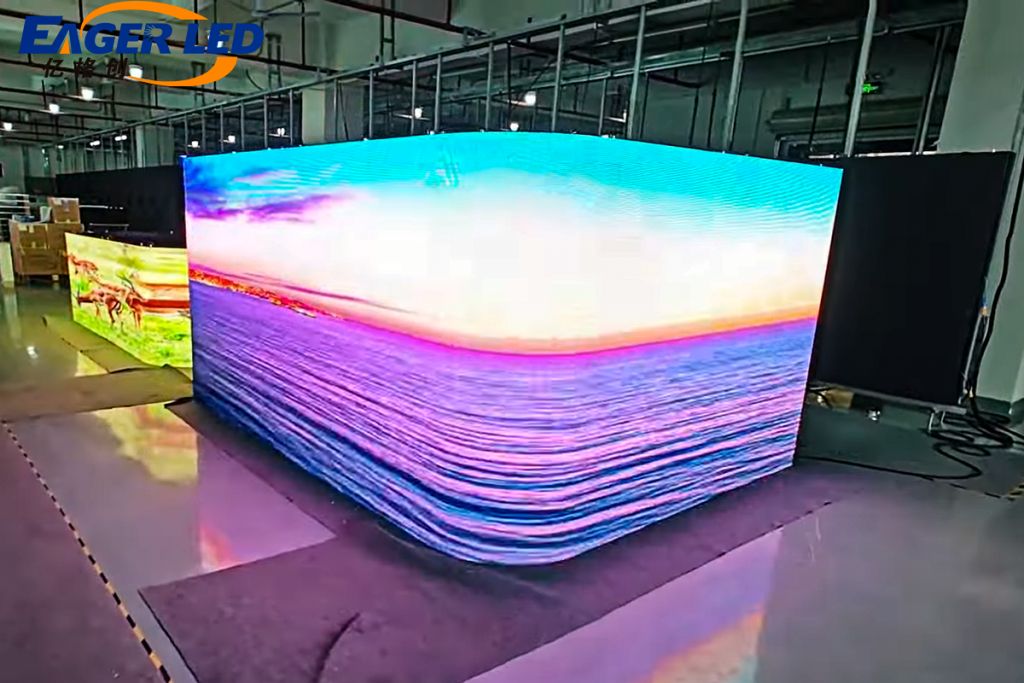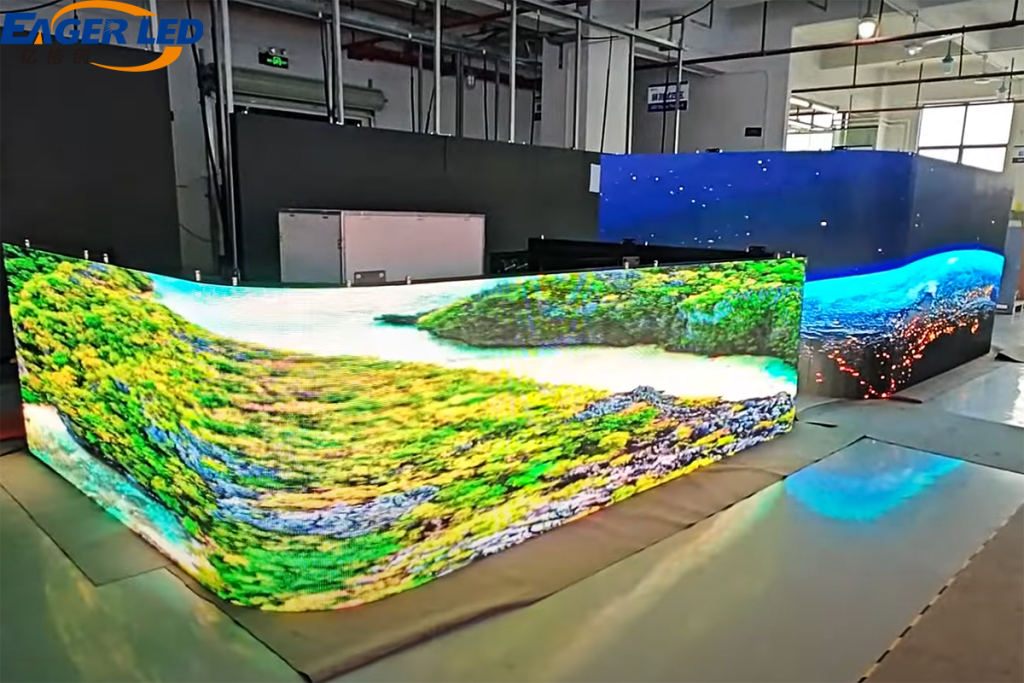Recent Posts
Send your inquiry
Without an excellent display solution, even the most amazing movies can’t be perfectly presented to the audience. Right now, the cinema market is dominated by traditional digital projector systems, creating a “one-player game” situation. However, in recent years, the introduction of LED cinema screen systems is quietly changing this. A new revolution in cinemas is on the way.
This article will explore how cinema LED screen is breaking through the limitations of traditional projection technology. It will also analyze its technical advantages and market potential, offering new ideas for upgrading cinema technology.
catalogue
1. Is Projector Still the Star as LED Cinema Screen Rises?- 2. What is LED Cinema Screen?
- 3. Why is cinema LED screen the future of cinemas?
- 4. Challenges LED movie screen Might Face
- 5. Is LED cinema screen suitable for home theater?
- 6.Cinema LED Screen Buying Guide
- 7.Recommendation for Excellent EagerLED LED Cinema Screen
- 8.Frequently Asked Questions Answered
- 9. Conclusion
1. Is Projector Still the Star as LED Cinema Screen Rises?
1.1 What is Traditional Digital Projection System?
Traditional digital projection systems are, simply put, the equipment used in cinemas to play movies. They use modern digital technology to convert movie content from digital files into images and project them onto a large screen for the audience to watch. The two most common technologies are DLP (Digital Light Processing) and LCoS (Liquid Crystal on Silicon). Both technologies can deliver very clear picture quality, even reaching 2K or 4K ultra-high-definition resolution, making details richer and colors more vibrant.

DLP technology uses tiny mirrors to reflect light and create images, while LCoS technology uses liquid crystal screens to adjust light and control image details. The main advantage of these digital projectors is that they are clearer, more color-accurate, and easier to maintain compared to traditional film projectors. They also eliminate the hassle of film replacement and storage.
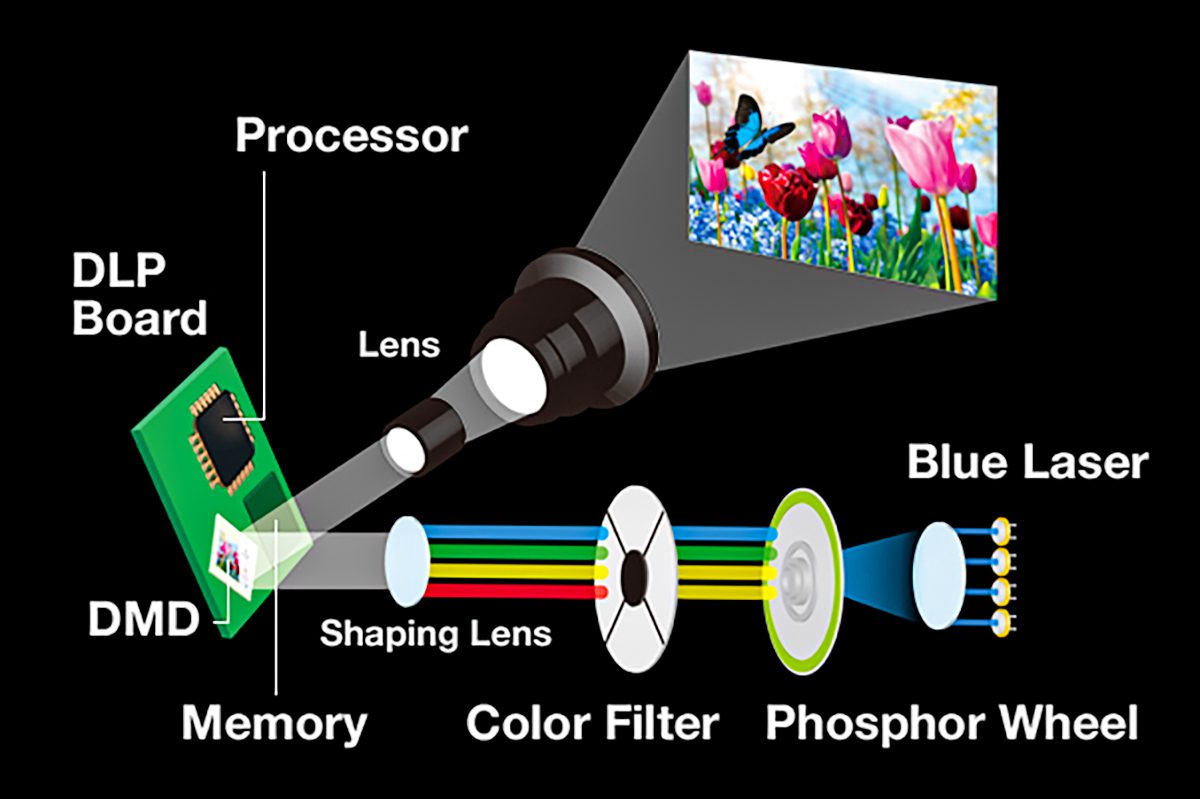
1.2 Projector Dominates in Cinemas
Since the early 2000s, digital projection technology has gradually replaced traditional film projectors. Digital projection systems not only improve movie picture quality but also greatly enhance efficiency and cost-effectiveness. Because digital content can be directly transmitted to the projector, cinemas no longer need to store large amounts of film, reducing storage space and maintenance costs.
With continuous technological advancements, digital projection systems have rapidly spread over the past 20 years. Today, 95% of cinemas worldwide have adopted digital projection technology. This trend is not only widespread in developed countries but has also become mainstream in many developing countries. Digital projection systems not only provide audiences with a more impressive visual experience but also make cinema operations more efficient.
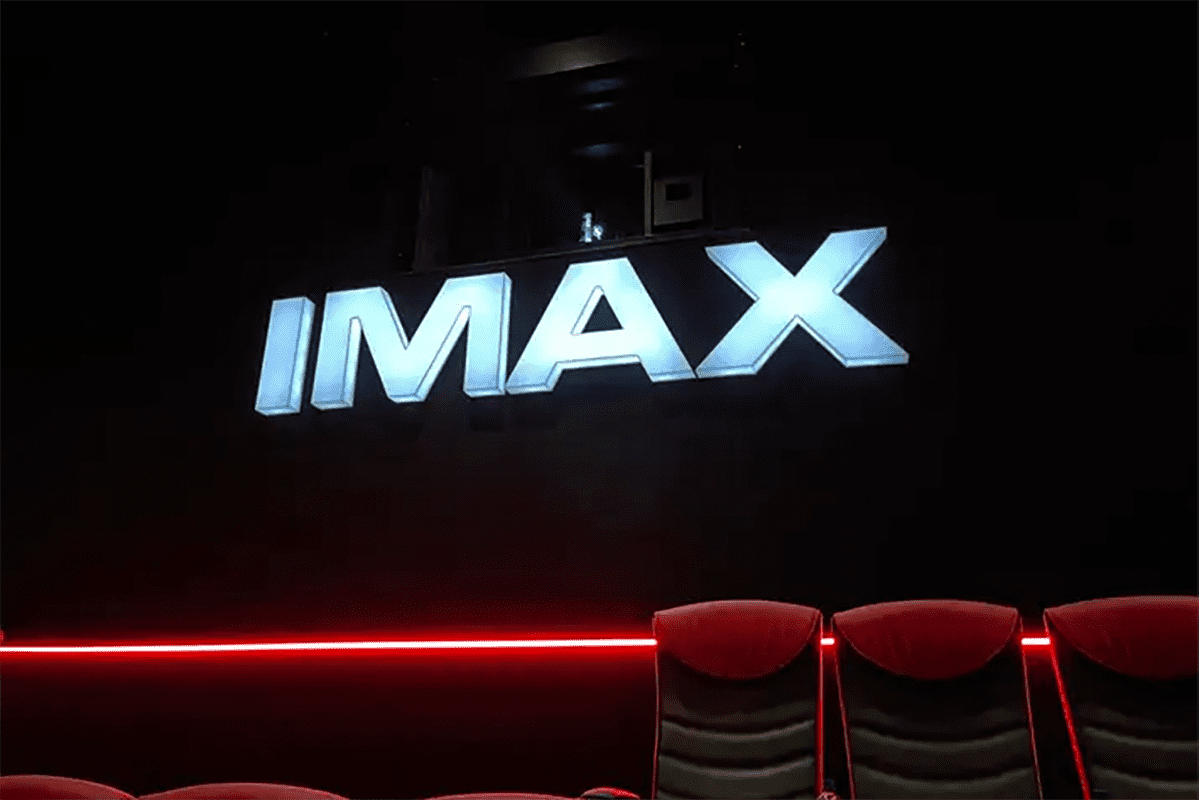
1.3 Rise of LED Cinema Screen Challenges Projector
In recent years, the rise of LED cinema screens has brought new competition to traditional projectors. Major brands like Samsung and LG have invested heavily, launching high-end cinema LED screens such as Samsung Onyx and LG LED Cinema.
In 2018, Samsung introduced the Onyx LED display, designed specifically for cinemas. This innovative product quickly caught the industry’s attention. By the end of 2022, multiple cinema LED displays, including those from Samsung and LG, received DCI (Digital Cinema Initiatives) certification. This means they meet cinema standards in color, brightness, contrast, and more, further proving the feasibility and advantages of LED technology in movie projection. According to The Hollywood Reporter, by early 2023, Samsung’s Onyx LED cinema displays had been installed in around 100 cinemas worldwide, including famous ones like the Culver Theater in Culver City, USA.
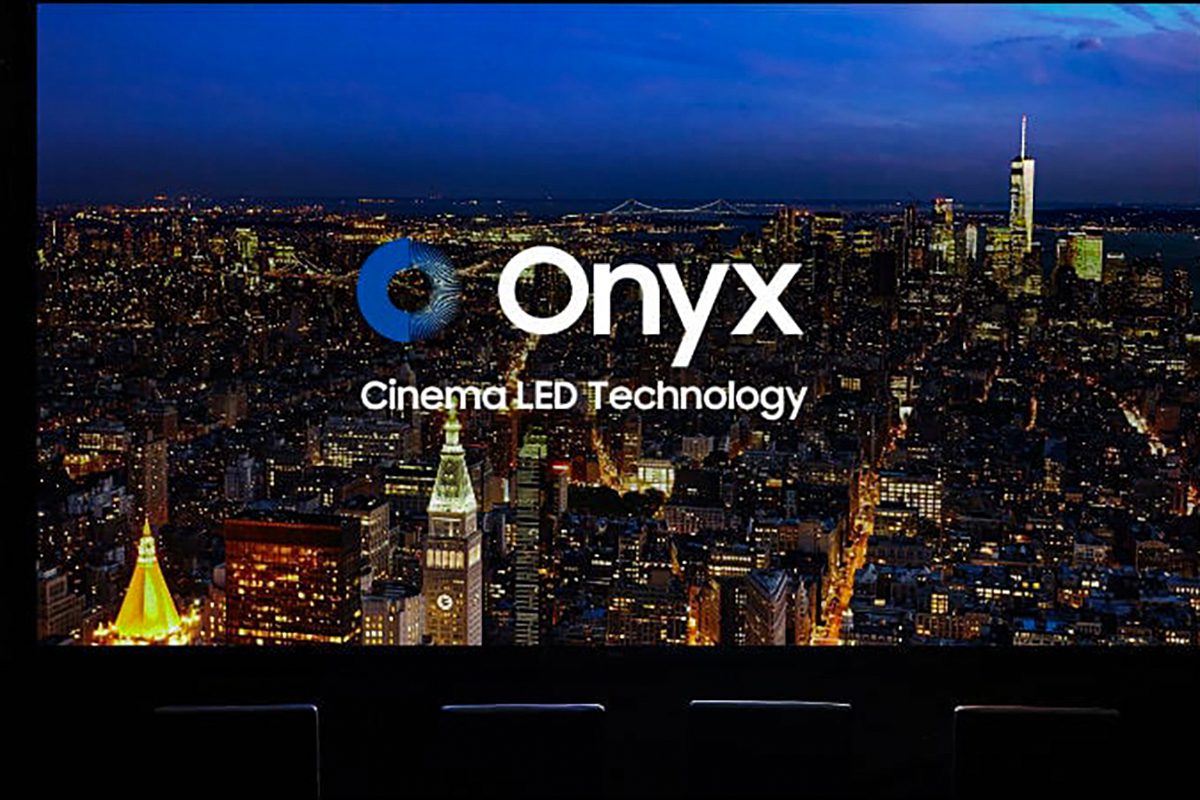
In the Chinese market, the use of LED cinema screen is also expanding rapidly. In 2018, Samsung opened its first Samsung Cinema LED theater in Shanghai, marking the beginning of the commercial era for cinema LED screen. In October 2024, a cinema in Nanjing, Jiangsu officially launched the world’s first 20-meter 4K fully transparent cinema LED display. This technological application shows that China is leading the world in the field of LED cinema screens. As of October 2024, China has opened over 50 LED theaters, covering first-tier and new first-tier cities like Beijing, Shanghai, Guangzhou, Shenzhen, and Nanjing.
Although traditional projection technology still plays an important role in cinemas, the rapid development of LED movie screen cannot be ignored. LED displays are opening a new era for the film industry.
2. What is LED Cinema Screen?
LED Cinema Screen is a type of movie screen that directly uses LED (Light Emitting Diode) display technology. Unlike traditional projectors that project images onto a screen, cinema LED display itself is a huge screen that can emit light and display images directly. You can think of it as a super-sized TV screen, but its size, resolution, and brightness far exceed those of ordinary TVs, designed specifically for cinema environments.
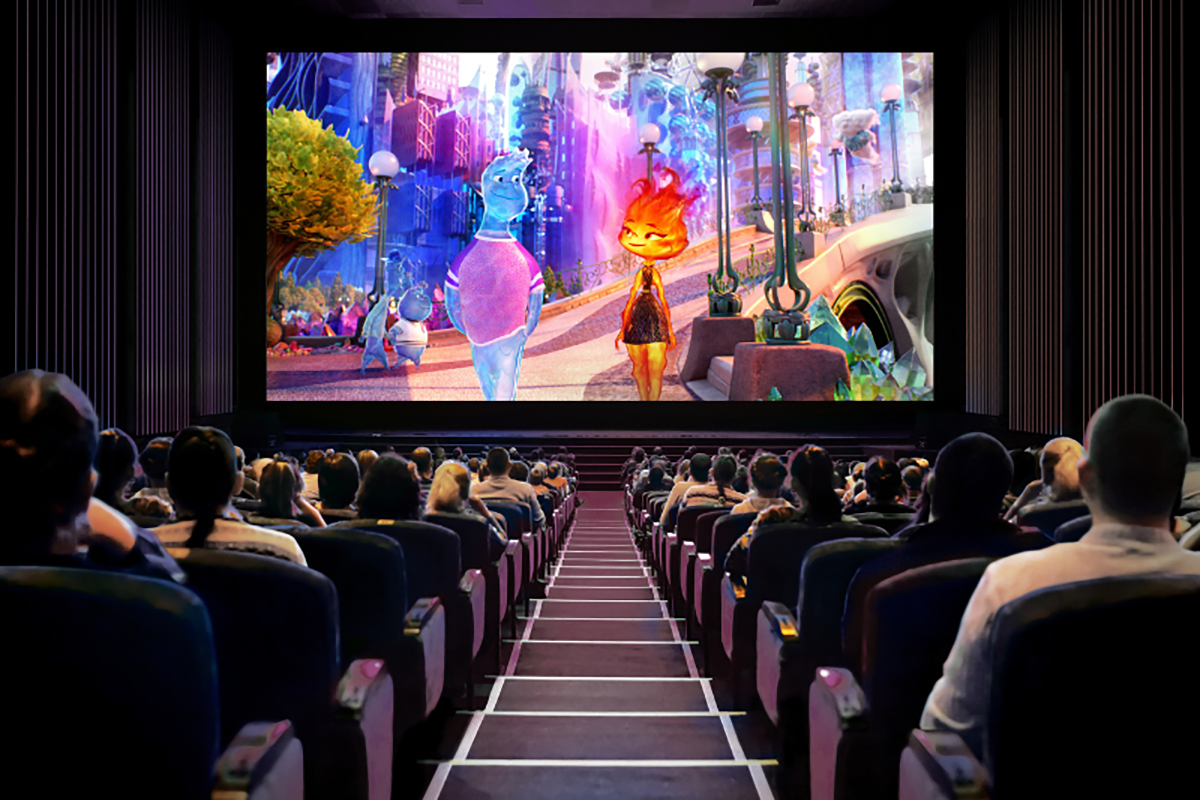
2.1 LED Cinema Screen has many advantages
High Brightness: The brightness of LED cinema screen far exceeds that of traditional projectors. Even in bright cinema environments, the image remains clear and bright, without appearing “washed out” or blurry. In LED movie theaters, there’s no need to create a dark environment, reducing the requirements for movie projection.
Vivid Colors: LED technology can display a wider color range, making colors richer and more realistic. Blacks appear deeper, and the contrast is higher, giving the image more depth. If traditional digital projection systems aim to recreate what the human eye sees, then cinema LED screen strives to go beyond what the human eye can see.
Full Acoustic Transparency Design: Without the optical path loss of projectors, cinema LED displays offer sharper images and better detail, especially in 4K or 8K resolutions. The full acoustic transparency design also ensures precise synchronization of sound and visuals, minimizing disruptions caused by audio-visual delays.
Unaffected by Ambient Light: Traditional projectors perform poorly in bright environments, which is why cinema projection rooms are usually dark. However, LED cinema screen is completely unaffected by ambient light, providing a more stable viewing experience. This means that even outdoors, LED movie screen can play movies without any issues.
2.2 LED Cinema Screen also has some notable drawbacks:
Although LED Cinema Screen has received widespread praise since its introduction, with some industry experts even claiming it will replace traditional digital projection systems, current cases show that cinema LED display is not perfect and still has some challenges to overcome.
High Cost: One major reason why LED movie screen has not been widely adopted is its high cost. The manufacturing and installation costs are much higher than traditional projection systems, requiring a significant initial investment. This may lead to higher movie ticket prices, and public acceptance still needs to improve, as not everyone is willing to pay a premium for a movie experience.
Higher Energy Consumption: LED screens consume more power than traditional projectors, which could increase long-term operational costs for cinemas.
Low Adoption Rate: Currently, the adoption rate of cinema LED screen in global cinemas is still low. Many cinemas still rely on traditional projection systems, so audiences have limited opportunities to experience it.
3. Why is cinema LED screen the future of cinemas?
Sensitive to Ambient Light: Although the brightness of digital projectors can be adjusted, their light source intensity is limited. In bright cinema environments (e.g., when the lights are not fully turned off), the projected image can appear washed out or blurry, affecting the viewing experience.
Complex Maintenance: The image of a projector is displayed through screen reflection, and the screen can easily accumulate dust or stains, requiring regular cleaning to maintain image quality. The projector’s bulb is a consumable item and typically needs to be replaced every few thousand hours. Replacing the bulb not only increases costs but also requires professional assistance. Additionally, the projector’s light path (the path of light transmission) can be affected by dust or impurities, requiring regular cleaning and maintenance. Otherwise, the image may become blurry or lose brightness.
Separate Sound System: In traditional digital projection systems, the sound system is usually installed around the screen or on the sides of the cinema, while the image is displayed on the screen. This separated design can lead to imperfect synchronization of sound and image, reducing the immersive experience.

3.2 How is LED Cinema Screen more advanced than Projector?
Self-Emitting Technology: cinema LED display does not need a projector because the screen itself emits light. This results in higher brightness, more vibrant colors, and sharper images.
Unaffected by Ambient Light: No matter the lighting in the cinema, the image on the LED screen remains consistently bright and clear.
Full Acoustic Transparency Design: High-end LED movie screen supports fully transparent sound technology. Speakers can be installed directly behind the screen, allowing sound to pass through the screen and perfectly sync with the image, creating a more immersive experience.
Wider Color Range and Contrast: LED technology can display richer colors and deeper blacks, making the image more layered and realistic.
Lower Maintenance Costs: LED screens have a long lifespan and rarely require frequent bulb replacements or light path cleaning like projectors, reducing operational costs for cinemas.
Future Compatibility: LED screens can easily support higher resolutions (like 8K) and advanced display technologies (like HDR), offering more possibilities for future movie projection. Although some screens use a transparent sound design (with holes in the screen), sound can still lose some quality when passing through, making the audio less clear or impactful.
3.3 Comparison chart between Projector and LED Cinema Screen
| characteristic | Traditional projector | LED Cinema Screen |
|---|---|---|
| Display Mode | Projecting images onto a screen using a projector | The screen directly emits light to display images |
| brightnes | Affected by ambient light, limited brightness | Extremely bright, not affected by ambient light |
| Color performance | Limited color and contrast, poor black performance | Vivid colors, high contrast, and deep blacks |
| Clarity | Due to the loss of optical path and the limitation of screen material, the clarity is limited | Sharp images with better details |
| Sound System | The sound system is separated from the screen, which may affect the immersive experience. | Supports full sound-transparent technology, with perfect synchronization between sound and picture |
| Maintenance costs | The bulbs need to be replaced regularly and the light path needs to be cleaned, resulting in high maintenance costs. | Long life and low maintenance cost |
| Future compatibility | Upgrading resolution and technology is difficult | Easily supports higher resolutions (such as 8K) and advanced technologies |
4. Challenges LED movie screen Might Face
Although LED cinema screen has shown great potential in both home theaters and commercial cinemas, its development path is not without obstacles. Like any emerging technology, cinema LED display faces some challenges as it rapidly grows in popularity.
Cost remains a major barrier.
While the picture quality and experience of cinema LED screen are unmatched, its high price makes it unaffordable for many average consumers. A high-quality LED movie screen can cost hundreds of thousands or even millions, which is still a significant investment for most families. Even commercial cinemas need to weigh the cost of upgrading equipment against future returns. How to reduce costs while maintaining quality is the top issue the industry needs to solve.
Technical bottlenecks still need breakthroughs.
Further reducing power consumption, minimizing heat generation, and achieving higher resolution on smaller screens are all challenges that technical teams need to overcome.
Improving market acceptance is a challenge.
In the field of movie projection, traditional digital projection technology has long been the standard. As a new technology, LED cinema screen needs time and market validation to change this mindset. Currently, many cinema managers have limited knowledge of cinema LED display and lack reliable data to evaluate its long-term benefits and return on investment. Additionally, the general public knows little about cinema LED screen. Many people have never even heard of this technology, let alone are willing to pay extra to experience an LED theater.
5. Is LED cinema screen suitable for home theater?
From the explanation above, it’s clear that while LED movie screen has some drawbacks, it outperforms projectors in many ways. In my opinion, it’s even more suitable for home theaters.
Imagine this, after a long day at work, you come home just wanting to relax and watch your favorite movie. You walk into your home theater, press the remote, and the LED movie screen lights up instantly. The image is so clear it feels like you can touch every detail. Sunlight streams through the window, but the picture on the screen remains bright and vibrant—no need to close the curtains or turn off the lights. This is the charm of LED cinema screen—it brings the cinematic experience right into your home.
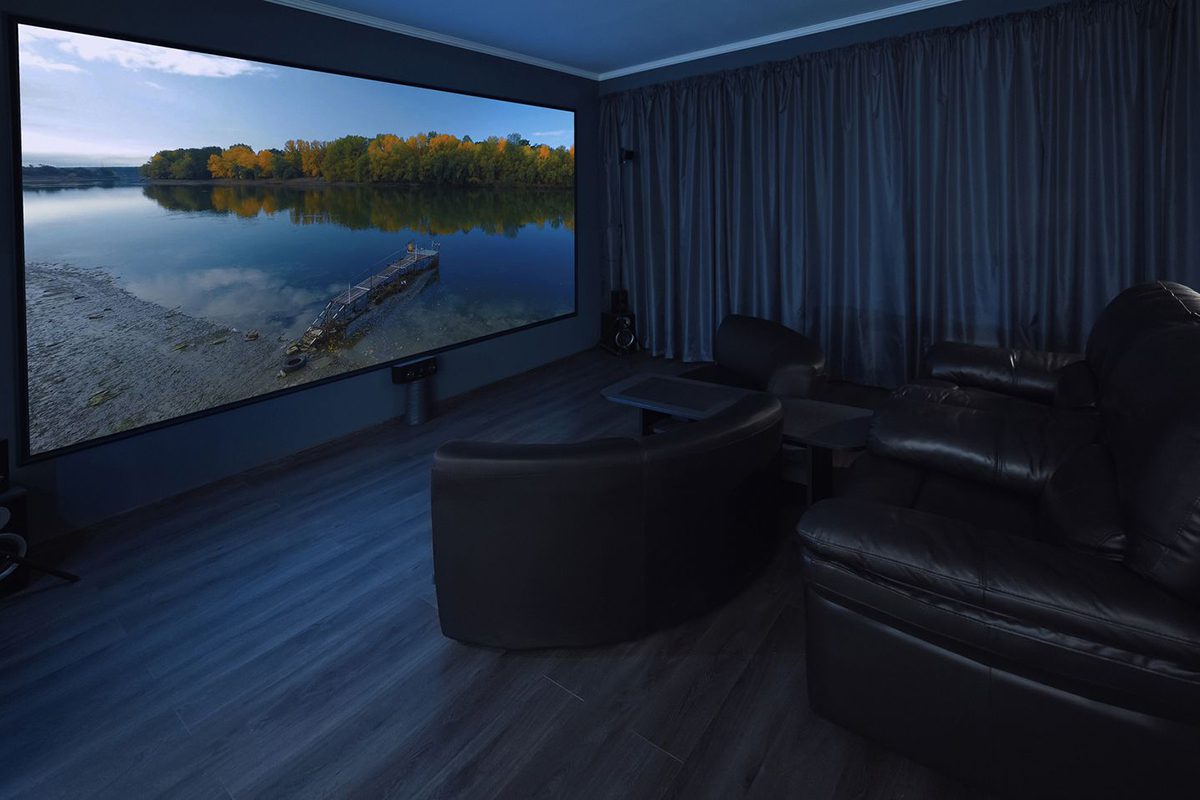
In terms of real-world performance, I believe projector can’t compare to LED cinema screen. This is because LED cinema screen uses high-density LED beads, where each pixel can emit light independently. This means the brightness and colors of the image can reach their full potential. Whether it’s a starry night sky or a sunny beach, cinema LED screen can accurately reproduce the scene, giving you the most realistic visual impact. In contrast, traditional projectors can display large images, but they often appear dull in bright environments, and the colors are relatively flat.
Additionally, cinema LED display doesn’t require complicated installation. It can be mounted directly on the wall, saving a lot of space. For modern homes, this is undoubtedly a huge convenience. You don’t need to reserve a specific projection distance for the projector or worry about the bulb’s lifespan. LED movie screen has a lifespan of tens of thousands of hours and requires almost no maintenance, truly offering a “turn on and use, turn off and leave” experience.
More importantly, the immersion of LED cinema screen is unmatched. Its ultra-high contrast makes blacks deeper and whites purer, creating a highly layered image. When you watch an action movie, fast-moving scenes remain clear and smooth without any blurring. When you enjoy a drama, the delicate color transitions and light changes make you feel like you’re inside the movie scene. Isn’t this the ultimate artistic experience?! This level of experience is hard to achieve with traditional projectors.
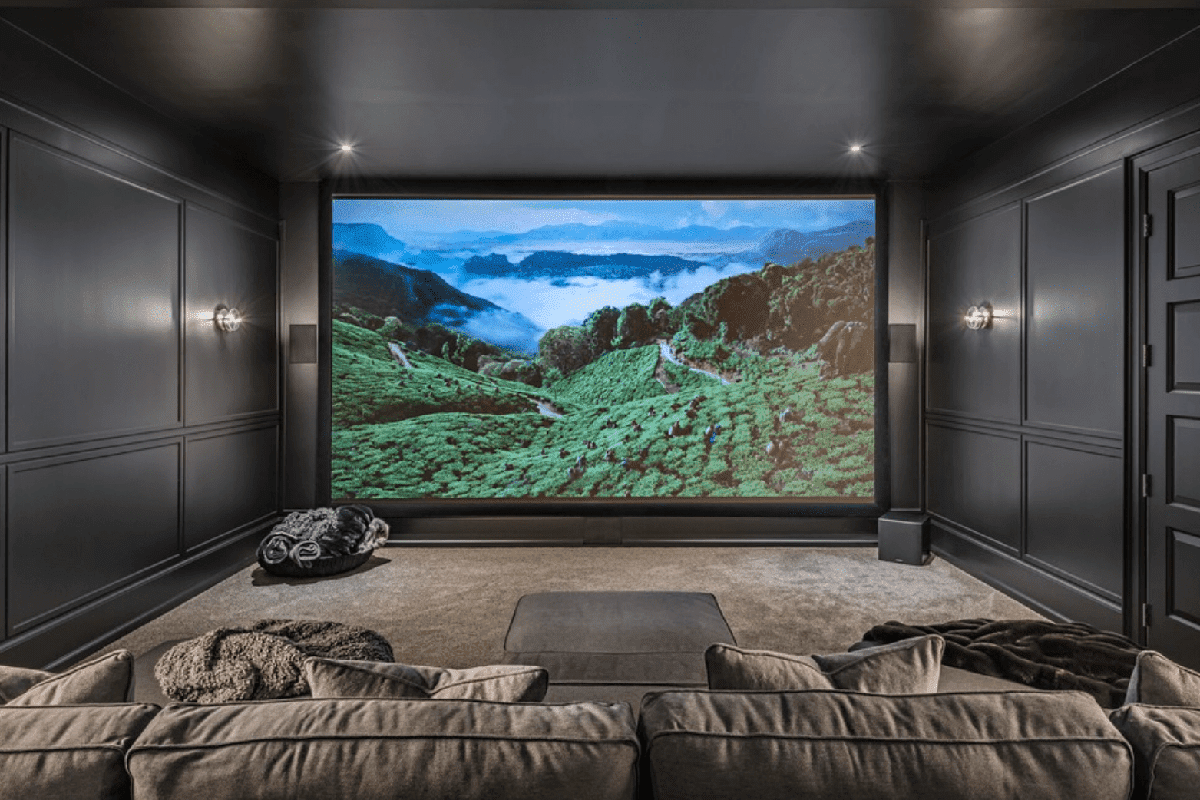
Certainly, the price of a cinema LED display is relatively high, but I believe it represents a one-time investment for long-term enjoyment. Unlike projectors, you won’t need to regularly replace bulbs or clean filters, nor will you have to worry about ambient light issues. It’s like a dependable companion, always ready to deliver an exceptional audiovisual experience.
In summary, if you’re aiming for a true home theater experience, an LED movie screen is undoubtedly the best choice. It harnesses the power of technology to bring the awe of the cinema right into your home, allowing you to enjoy an immersive viewing experience anytime, anywhere. Whether it’s for family gatherings, friend parties, or solo relaxation, an LED cinema screen can become an indispensable part of your life.
6.Cinema LED Screen Buying Guide
6.1 Cinema LED Display in Theaters
In movie theaters, an LED cinema display must deliver a stunning visual experience. It should showcase ultra-high-definition picture quality, with vivid and true-to-life colors, rich details in the shadows, and brightness that doesn’t glare, making viewers feel as if they’re part of the movie scene. The screen should be large, offering a wide field of view, and paired with excellent sound to create an immersive viewing atmosphere that completely draws you into the story.
Moreover, through professional cinema environment design, it brings a more intense visual impact and emotional resonance. This is an experience that cannot be replicated with home equipment, and spending money is all about enjoying this unique “cinematic feel.”
Buying Tips:
Resolution: Opt for a 4K or higher resolution screen for a fine, grain-free picture.
Brightness: High brightness (≥1000 nits) ensures clarity even in well-lit environments.
Contrast: High contrast (≥5000:1) delivers deeper blacks and brighter whites, enhancing the picture’s depth.
Color Performance: A wide color gamut (≥DCI-P3) displays rich and accurate colors, faithfully reproducing the film’s original hues.
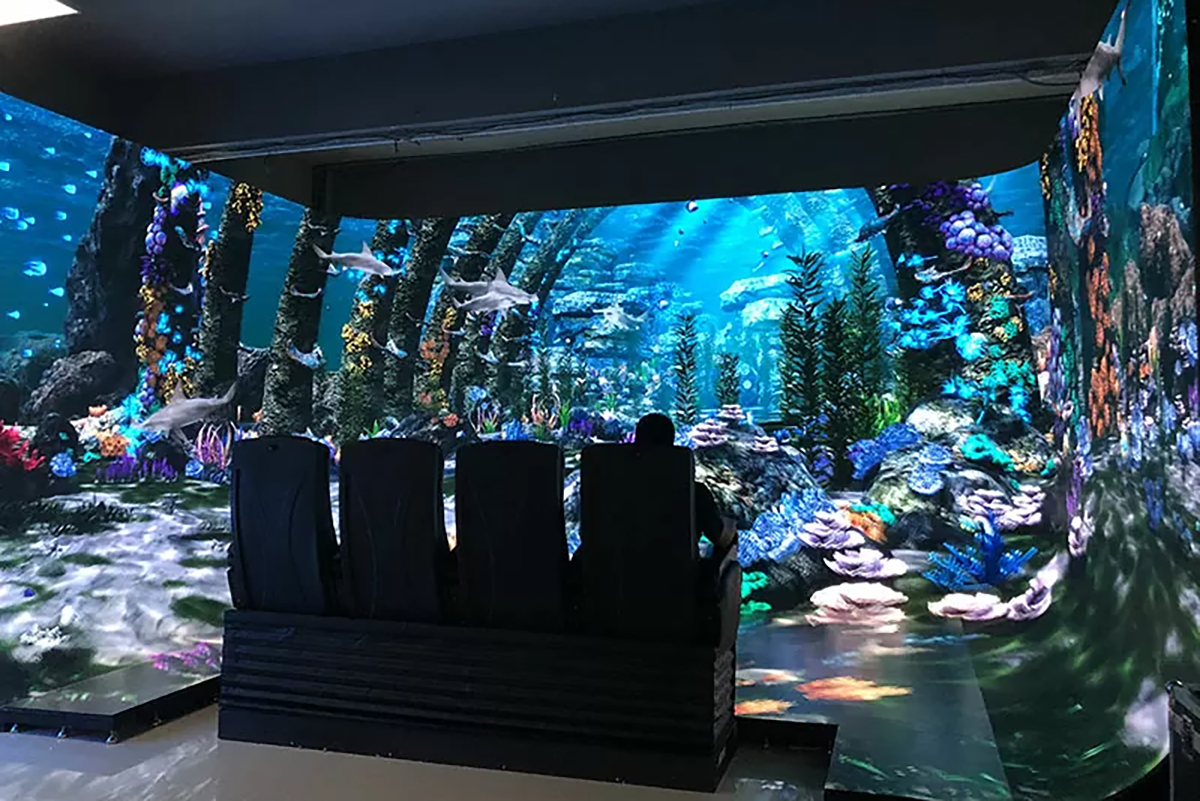
6.2 Cinema LED Display in Home Theaters
In a home theater, although the environment is smaller than a cinema, the requirements for effects are not any less demanding; they just have different focuses. The LED screen for a home theater needs to balance image quality and comfort. The size doesn’t need to be as big as in a cinema, but it should match the viewing distance to ensure a comfortable viewing experience. After all, a home theater is not just a place to watch movies; it can also be a shared space for family entertainment and relaxation.
Buying Tips:
Screen Size Selection: Choose an appropriate screen size based on the size of your living room, with common options being 100 inches, 120 inches, and so on.
Resolution: 4K resolution is a basic requirement for home theaters, providing clear images.
Brightness and Contrast: Opt for a screen with moderate brightness (500-800 nits) and high contrast, which is suitable for a home environment.
Smart Features: If possible, choose products that support intelligent dimming, eye protection mode, and other features to enhance the user experience.
7.Recommendation for Excellent EagerLED LED Cinema Screen
The EA640F2 LED display is ideal for a home theater screen because it integrates cinematic-grade HD display technology, offering exquisite and realistic color representation with precise details in both dark and bright areas. Coupled with a 140° ultra-wide viewing angle, it ensures a consistent and clear picture from any seating position, making it perfect for family movie nights with multiple viewers.
The EA640F2 LED display supports universal video formats such as 1080p, 2160p, and the top-tier 4320p, compatible with ultra-high resolutions of 2K, 4K, 8K, and even 16K, delivering an extremely detailed visual experience for movie screenings. Its powerful wireless connectivity makes content updates and remote control easy and convenient, making it an ideal choice for LED cinema displays.
The EA600COB2 LED cinema screen, leveraging its cutting-edge COB packaging technology, achieves an ultra-slim design of 38mm while ensuring excellent contrast and brightness performance. Whether it’s 8K, 4K, or 2K clarity, it presents detailed and realistic images, providing viewers with an immersive movie-watching experience.
8.Frequently Asked Questions Answered
9. Conclusion
We have witnessed the trend of transitioning from projectors to LED cinema screen, a new technology that brings fresh possibilities to movie projection. Among the many cinema LED display solutions, EagerLED LED displays undoubtedly stand out as a promising option due to their exceptional display performance and innovative technological advantages.


